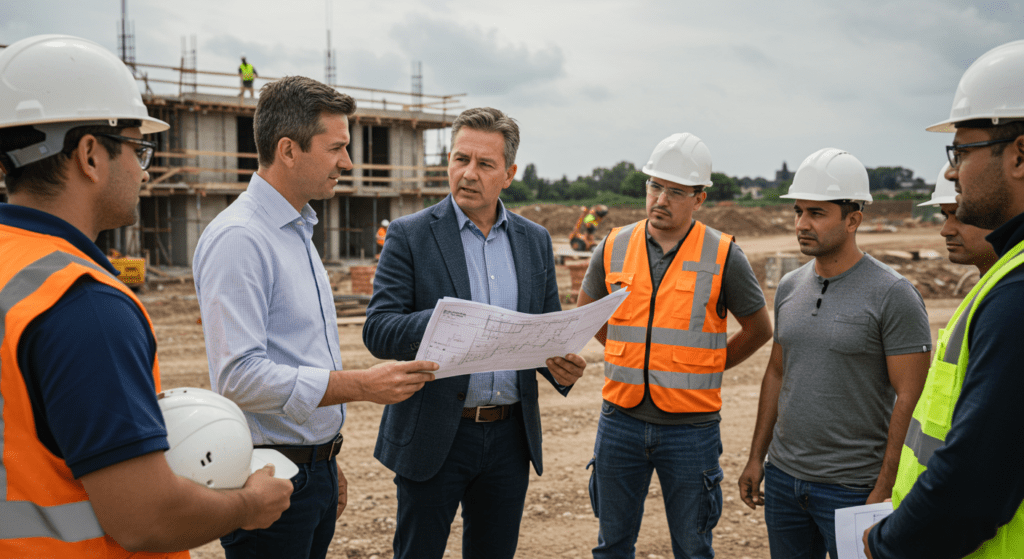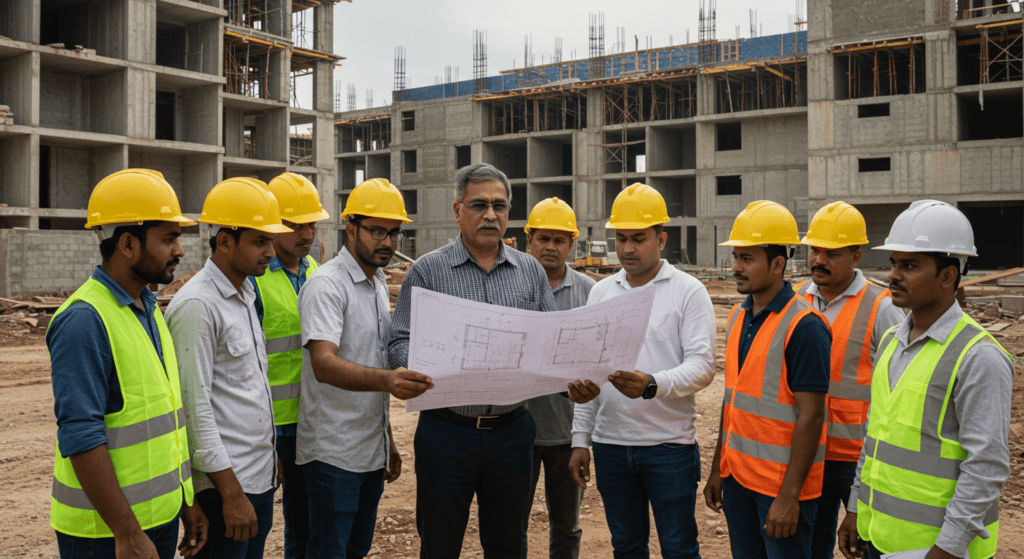- The Importance of Construction Insurance
- Types of Coverage in Construction Projects
- Key Risks in the Construction Industry
- Understanding Liability and Property Claims
- Worker’s Compensation in Construction
- How to Assess Your Construction Insurance Needs
- Factors Affecting Insurance Premiums
- The Claims Process: What to Expect
- Compliance and Legal Considerations
- Future Trends in Construction Insurance
Construction insurance plays a critical role in safeguarding construction projects, ensuring that risks are managed and that all involved parties are adequately protected.
With complex projects, diversified risks, and numerous stakeholders, construction insurance is an essential component of the modern construction industry that ensures continuity, safety, and financial stability.
1. The Importance of Construction Insurance
Construction projects inherently involve high risks, including potential structural failures, on-site accidents, and environmental hazards. Having the proper insurance coverage is not just about mitigating financial loss; it also helps maintain the integrity and viability of projects in the event of unforeseen challenges.
Insurance provides assurance to project stakeholders by balancing the risk-reward equation, ensuring that funds are available to address unexpected damages and liabilities, and preserving the reputation of contractors, developers, and subcontractors alike.

2. Types of Coverage in Construction Projects
There is no one-size-fits-all solution when it comes to construction insurance. Typically, several types of coverage come together to create a comprehensive risk management package. General liability insurance covers bodily injury and property damage claims, while contractors’ all-risk insurance protects against physical loss or damage to project materials and work in progress.
Professional indemnity insurance defends against claims of negligence or design flaws, and builders’ risk insurance focuses on losses incurred during the construction phase. Each policy can be tailored to the specific needs of the project, ensuring all potential risks, from design errors to on-site accidents, are adequately covered.
3. Key Risks in the Construction Industry
The construction industry faces an array of risks that vary depending on location, project type, and the scale of operations. Common risks include delays due to weather conditions or supply chain interruptions, structural defects that can lead to costly repairs, and on-site accidents that can cause serious injuries.
Additionally, environmental risks such as flooding or earthquakes can compound construction-related damages. Effective insurance planning requires an accurate assessment of these risks, with safety protocols and contingency plans in place to minimize impact and ensure swift recovery from any incidents.

4. Understanding Liability and Property Claims
Liability issues and property claims are central to construction insurance. Contractors can be held liable for both physical injuries and property damage that occur during the construction process, even if the accident occurs off-site due to construction activities. Insurance policies often specify the limits and extensions of coverage, covering claims such as slip-and-fall accidents, equipment malfunctions, or even errors in the architectural design.
Additionally, property claims can arise from damage to building materials, temporary structures, or completed work, underscoring the need for policies that safeguard every aspect of the construction project.
5. Worker’s Compensation in Construction
Worker’s compensation is a critical element of construction insurance, protecting both employers and employees. Construction work often involves physically demanding tasks that carry a heightened risk of injuries. Worker’s compensation policies provide financial support for medical expenses and lost wages if an employee is injured during the construction process.
This coverage is usually mandated by law, making it an indispensable part of an overall insurance strategy. It not only protects workers but also shields employers from lawsuits related to workplace injuries. Adequate worker’s compensation coverage is essential for maintaining a safe work environment and ensuring that injured workers receive timely and comprehensive care.

6. How to Assess Your Construction Insurance Needs
Assessing construction insurance needs begins with a thorough evaluation of the project’s scope, potential risks, and specific vulnerabilities. Stakeholders should meticulously review project specifications, contractual obligations, and potential liability exposures. Consulting with insurance professionals who specialize in construction projects can help determine the appropriate coverage combinations and policy limits.
A risk assessment exercise should consider various factors, such as the location of the project, the history of similar projects in that area, and any unique challenges associated with the building design or materials. This proactive approach helps ensure that both anticipated and unforeseen risks are addressed, providing peace of mind throughout the life cycle of the project.
7. Factors Affecting Insurance Premiums
Several factors influence insurance premiums in the construction industry. The size and complexity of the project, the contractor’s track record, and the specific areas of risk all play critical roles in determining premium costs. Projects with a history of claims or completed under risky conditions will often see higher premiums. Premiums can also reflect the quality of risk management practices, such as safety protocols, adherence to modern construction techniques, and compliance with regulatory standards.
Additionally, the location of the project has a significant impact, particularly if the site is prone to natural disasters or is in a region with higher litigation risks. Understanding these factors helps project managers and contractors optimize their insurance strategies and manage costs effectively.

8. The Claims Process: What to Expect
When an incident occurs, understanding the claims process in construction insurance is vital to reduce downtime and ensure an equitable resolution. The initial step involves notifying the insurer immediately, providing a detailed account of the incident along with supporting documentation. Inspectors and adjusters are then dispatched to assess the damage, verify the claim, and determine the extent of coverage available under the policy.
Contractors and other stakeholders must cooperate fully during the investigation, providing additional detail as requested. Once the claim is processed and approved, the insurer disburses the funds according to the contractual coverage terms. This process, while sometimes lengthy, is designed to ensure that all claims are handled fairly and systematically, reflecting the complex nature of construction-related incidents.
9. Compliance and Legal Considerations
Compliance with legal and regulatory standards is crucial in managing construction insurance effectively. Failure to adhere to these guidelines may leave a project exposed to significant financial and legal risks. Local, state, and federal regulations often require contractors to obtain specific types of insurance before commencing a project.
Moreover, legal considerations extend to the intricate details of contract law, where responsibilities and liabilities must be clearly delineated among parties involved. Regular audits, continuous training on compliance issues, and keeping abreast of legislative changes are highly recommended for companies operating in the construction field. These measures ensure that all parties mitigate risk and remain in compliance with the prevailing legal framework.

10. Future Trends in Construction Insurance
As the construction industry evolves, so too does the landscape of construction insurance. Technological advances such as sensors, drones, and advanced analytics are beginning to transform risk assessment and claims management, making the field more proactive and predictive. Innovations like smart contract systems in blockchain technology are being explored to streamline claim verification processes and foster greater transparency between insurers and contractors.
Furthermore, the growing emphasis on sustainable construction practices is influencing the types of risks covered by insurance policies. As environmental concerns become increasingly central to construction approvals, insurers are adapting their products to include coverage for green building practices and environmental liabilities. Looking ahead, greater integration of technology and a shift towards more comprehensive risk management strategies will define the future of construction insurance, ensuring that the industry continues to evolve in response to emerging risks and opportunities.
Conclusion
In conclusion, construction insurance is an indispensable tool for managing the diverse risks associated with modern construction projects. From protecting against common physical risks to navigating complex legal and compliance issues, comprehensive insurance coverage underscores the commitment to safety, quality, and financial stability.
By understanding the various types of coverage, assessing unique project needs, and keeping pace with technological advancements and regulatory changes, industry professionals can ensure they are well-prepared to handle any challenges that arise. As the field continues to develop, staying informed and proactive in insurance management will be key to safeguarding projects and ensuring long-term success in the competitive and high-stakes construction industry.
